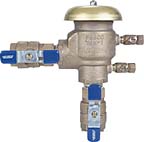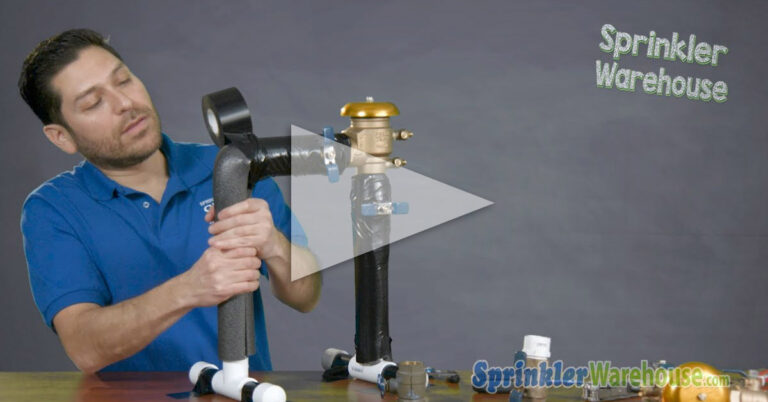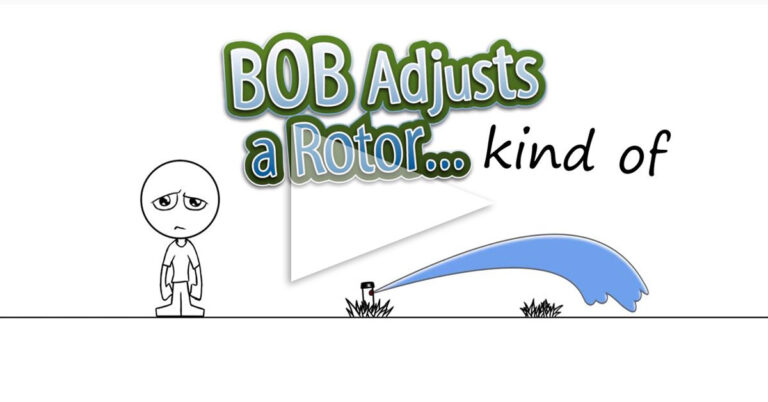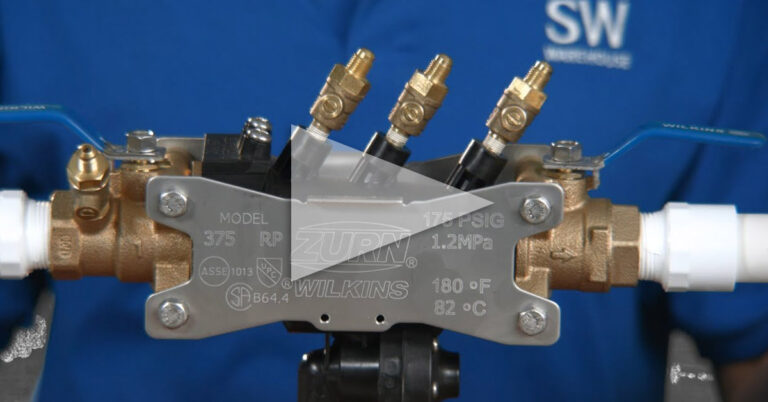What Does A Backflow Preventer Do?
Choosing a proper backflow device is critical. A backflow preventer is a device that prevents contaminants from entering a potable water source during a backflow event. In most homes the landscape irrigation system and the potable water system are one and the same — there is no separation. Here’s where the danger comes in. Sprinkler heads are often exposed to weed killers, pesticides, and other poisons. Backflow is a condition in which an irrigation system draws water back into the water source.
How Can Backflow Be Harmful?
Backflow can result in contaminated water at a tap inside the home. Is there any wonder why the building code requires that all outside irrigation lines have some sort of anti-siphon protection? Backflow is the unwanted reverse flow of any liquid, solid, or gas in a piping system. In an irrigation application, this means that water within the irrigation system may find its way back into the potable (drinkable) water system during a backflow incident. There are two main types of backflow: Back-Pressure and Back-Siphonage.
- Back-Pressure is when pressure downstream of the device is greater than the pressure upstream. A water hammer is an example of back pressure.
- Back-Siphonage occurs when a vacuum upstream siphons water backward. An open fire hydrant or water main break can cause back-siphonage.
Choosing A Backflow Device:
These are a must in all sprinkler systems if you want to protect yourself from physical harm as well as the law. The backflow preventer prohibits the contamination of your personal water supply. And while the anti-siphon valve already has such a stabilizing mechanism built-in, the Globe and Angle Valve are incomplete in such regard. Thus, if you are going to install a Globe or Angle Valve, you must also choose one of the following backflow preventers.
Atmospheric Vacuum Breaker (Not Recommended):
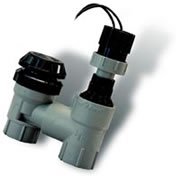
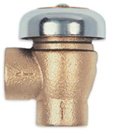
SprinklerWarehouse.com recommends that you avoid this type of backflow device. It is unreliable. If you choose this type, purchase one unit for each control valve located on the landscape. These are the cheapest of backflow preventers; however, most cities don’t allow them in irrigation systems.
- When installed, each must be at least 6″ above the highest sprinkler head in the zone it protects.
- If you have several control valves, specifically six or more, AVBs will cost you more in the long run.
The images to the right depict a typical atmospheric vacuum breaker and one integrated into an anti-siphon zone control valve.
Pressure Vacuum Breaker:
A single-pressure vacuum breaker is a more practical choice. It has a similar function as the AVB but only requires the installation of one breaker for the entire irrigation system. Accordingly, the number of control valves on your property is irrelevant.
- Mount a pressure vacuum breaker on the mainline leading to all control valves, 6″ above the highest sprinkler head. This is one of our best-selling types of backflow devices.
Reduced Pressure Zone Assemblies:
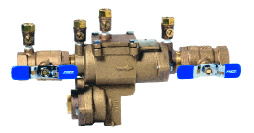
The best backflow preventer that money can buy. Commercial sprinkler systems almost always use Reduced Pressure Zone Assemblies and can be a great compliment to a residential system as well. The device allows for the application of fertilizers or other chemicals into the irrigation system, a function that no other preventer performs.
- Used mostly in dangerous situations, it should be set up 12″ above ground.
Double Check Backflow Preventer:
A Double Check Assembly allows for the flow of pure water that is not susceptible to contaminants in the air. Though this device does not allow for the application of chemicals into the irrigation system, it is cheaper in comparison to the RPBP.
- Typically, it is installed beneath the ground in a vault and sometimes in basements, a tactic that protects them from freezing. This is one of our Best Selling types of backflow devices. It works great when installing the backflow device in a basement or below grade.
- The problem with double-check assembly though is that the preventer is built with two check valves. In the instance that dirt or other objects get stuck in one valve, it is likely that the same will happen to the other valve at the same time. Thus, the two valves could fail at the same time, in turn causing the water supply to be contaminated by noxious substances.






















